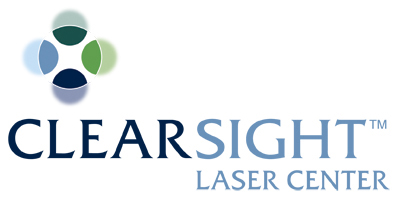  |
|
Understanding Your Eyes: Refractive Errors. Any deviation from normal vision is referred to as a refractive error. Myopia, hyperopia, astigmatism and presbyopia are different types of refractive errors. With refractive error, light rays entering the eye are focused at a point not on the retina, so that the image that is formed on the retina is blurry. The goal of any method of correcting refractive error (glasses, contacts or LVC) is to focus the light clearly on the retina. Myopia (nearsightedness) means that the eye is too short for the focusing power (curvature) of the cornea such that light rays are bent too much and therefore focused in front of the retina. The light rays continue on to the retina where they form a blurry image. Hyperopia (farsightedness) means that the eye is too long for the focusing power of the cornea such that light rays are not bent enough and therefore focused behind the retina (if that were actually possible). Light rays arriving at the retina are not focused yet so they form a blurry image. Symptoms of hyperopia often do not show up until later in life because in youth, the up-close focusing mechanism (accommodation) can be used to bend the light rays more and thus make the vision clear. With aging, accommodation fatigues and the blurriness from hyperopia will then become apparent. Astigmatism usually results form the cornea being shaped more like part of a football rather than part of a basketball, so that incoming light rays are focused at multiple points in the eye rather than on the retina; at the plane of the retina, they’re almost all out of focus. Astigmatism is often combined with myopia or hyperopia. Presbyopia (the need for reading glasses) will ultimately affect everyone due to the loss of accommodation as a result of loss of lens flexibility that occurs with aging. With presbyopia, the vision up close becomes blurry and usually requires people age 40 and older to wear bifocals or reading glasses (or if they are a little nearsighted, take off their glasses and use their nearsightedness to read). Because vision correction surgery cannot reverse this aging process, presbyopia cannot be directly corrected surgically, however, there are surgical and nonsurgical techniques available which can effectively reduce symptoms associated with presbyopia. A Closer Look: The goal of LVC is to correct the shape of the cornea so that the incoming light rays are now focused clearly in the eye. The excimer can precisely reshape the cornea because each pulse of the laser removes 0.25 microns (0.00004 inches) of corneal tissue. The distribution, pattern and number of pulses is computer controlled in order to leave the cornea with a new shape that results in correcting the refractive errors. Both LASIK and PRK take 5-10 minutes per eye, are performed under topical anesthesia with mild oral sedation and, apart from a brief sensation of pressure on the eye, are generally painless. Our most commonly performed procedure is All laser Custom LASIK (also called Custom LASIK with intralase, bladeless LASIK and intraLASIK).
After a thorough evaluation, we will sometimes find that LASIK is not a good option for certain individuals; very often, PRK will be a suitable alternative. PRK (Photorefractive Keratectomy) PRK is similar to LASIK except that no flap is created. The protective surface layer of the cornea (the corneal epithelium) is removed and the excimer laser then reshapes the cornea. The epithelium grows back over 3-4 days, during which there may be some discomfort; vision usually improves once healing is complete.
|
|
|
||
| Franklin W. Lusby, M.D., Medical Director, Laser Vision Correction Specialist info@2020clearsight.com |
Loren D. Rude, O.D., Clinical Director 949.291.7681 lrude@2020clearsight.com |
Arlene C. Gutierrez, Director, Business Development 949.254.6591 agutierrez@2020clearsight.com |
NEWPORT BEACH CENTER: 949.600.4668 2121 E. Coast Highway, Suite 200, Corona del Mar, CA 92625 BREA CENTER: 714.880.8808 10 Pointe Drive, Suite 310, Brea, CA 92821 FRESNO CENTER: 559.473.4053 1680 E. Herndon Ave. #101, Fresno, CA 93720 info@2020clearsight.com |
||